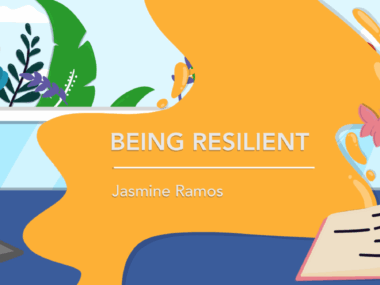Making Churches More Accessible
Written by |

“LET ME KNOW IF YOU NEED ANYTHING!”
An usher exclaimed these words at the top of his lungs in the church auditorium while putting his hand on my shoulder. To say this experience was patronizing would be an understatement, but it did provide the catalyst for the perfect rebuttal. Upon moving away from this man and taking a seat, I leaned over to my brother and said, “Hey, apparently I’m deaf and blind in addition to being in a wheelchair.”
I’ll never forget this encounter from a few years ago, back when my siblings and I attended a megachurch in our area. Though I’m sure this man had good intentions of being accommodating to one of the only wheelchair users in the packed auditorium, his approach toward me exhibited an ableist attitude that I see all too often in churches.
Though I haven’t written about it extensively, the church has been a factor in my life since I was born. From being raised in a Baptist household to being active in a campus ministry when I was in college, I have myriad experiences in religious circles and communities. My faithful readers will even recall that the title of my column stems from a message my youth pastor gave when I was in high school.
I have plenty of positive experiences with church friends and people, and my faith will always remain a core part of my identity. Yet, with Disability Pride Month now underway, I’d like to present ways that the church can be more inclusive toward people with disabilities.
Note: I’m basing these principles on my experiences in the Christian church, but they remain applicable to organizations and communities from any religion or faith.
Building access
I only learned through research for this column that the church is exempt from having to comply with the Americans with Disabilities Act of 1990. While this revelation was new to me, I can’t say it was terribly surprising. Whether it’s an inaccessible stage in a church sanctuary, or simply off-campus youth events that emphasize physical activity, many churches don’t make basic accessibility a priority. When youth groups make ice skating and camping trips their primary social events, don’t expect many wheelchair users to show up.
This same principle applies to small groups that only meet in people’s houses. When I was a kid, Sunday school and Bible studies still took place in church buildings, making them easy for me to attend. In recent years, however, more Christian communities are meeting in people’s houses, the majority of which are woefully inaccessible. Without the option to meet in an accessible venue, disabled individuals are completely isolated from the community spaces that churches put so much emphasis on.
Also, read this article from disability advocate and writer Shannon Dingle about the lack of healthcare awareness in the church.
Virtual options
A silver lining of the COVID-19 pandemic is that virtual interactions were integrated into every part of our society. This has been especially helpful for disabled individuals who now have more opportunities for remote work, online social events, and virtual worship services. Being able to watch a church service on YouTube or participate in virtual small groups via Zoom has opened up a world of possibilities for people with all kinds of disabilities.
As the world reopens and in-person gatherings resume, we should not abandon virtual options. For many people in disability and chronic illness communities, virtual gatherings remain the most accessible form of participation.
Treating us like people
Even more important than basic accessibility is treating people with disabilities and chronic illnesses with dignity. As soon as a church member talks down to a wheelchair user or prays for them to be “healed,” that person in a wheelchair will feel alienated.
Instead, we just want the same treatment as other members of the congregation. We don’t need pity or pandering. All we need is fellowship and the respect of the people around us.
Several days ago, I visited a church across the street from my house. This was my first in-person worship service since the beginning of the pandemic, and it was a rewarding experience. I found this particular community to be genuinely inclusive, welcoming, and not at all pandering toward people like me. The sanctuary had multiple accessible spaces for seating, the staff members were friendly, and the community atmosphere made me feel welcome. Simple as that.
Accessibility in places of worship and spirituality should never be an afterthought. It should be a priority.
Now that phrase I’m happy to shout as loud as I can.
***
Note: SMA News Today is strictly a news and information website about the disease. It does not provide medical advice, diagnosis, or treatment. This content is not intended to be a substitute for professional medical advice, diagnosis, or treatment. Always seek the advice of your physician or other qualified health provider with any questions you may have regarding a medical condition. Never disregard professional medical advice or delay in seeking it because of something you have read on this website. The opinions expressed in this column are not those of SMA News Today, or its parent company, Bionews, and are intended to spark discussion about issues pertaining to spinal muscular atrophy.







Young Lee
Glad to see you wrote this column. It's an important topic.
Kevin Schaefer
Thanks man!